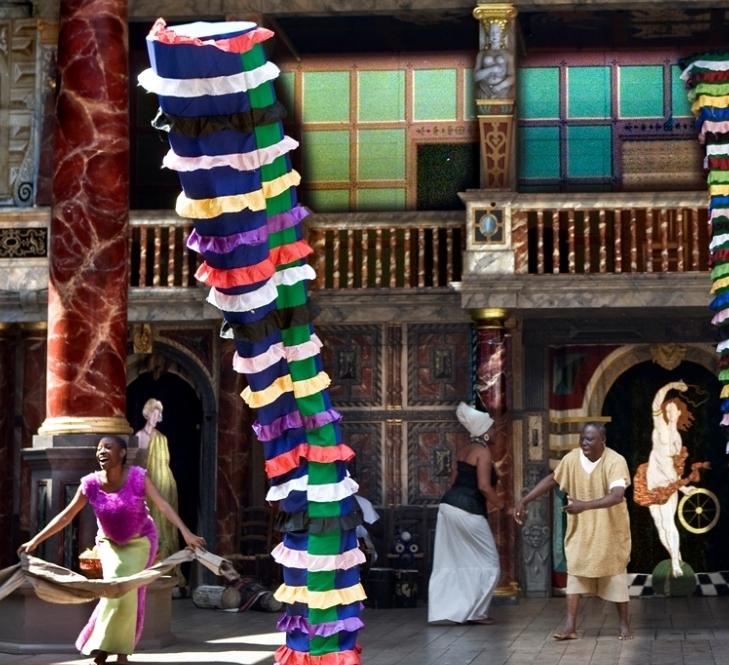The Winter’s Tale may not be one of the best loved of Shakespeare’s plays – not quite a comedy, not quite a full-blown drama – but the Globe was packed on the hottest night of the year for this vibrant Yoruba version direct from Lagos. South-East London has the largest Yoruba population outside Nigeria. The audience was maybe 40 per cent Yoruba-speaking (my daughter thought 70 per cent), and their gusts of laughter and murmurs of affirmation set the tone for the rest of the crowd’s responses.
Swinging drum rhythms and the sung narration of a majestic turbaned woman in the role of Time established this as a production with groove, though the cursory scene descriptions on the surtitle screens made it clear this wasn’t a line-by-line translation of Shakespeare. Rather we were watching a Yoruba play – Itan Oginintin – adapted by the group Renegade Theatre, in which Shakespeare’s characters became figures from Nigerian mythology. Leontes, the overbearing king whose jealousy sets the action in motion, was cast as the thunder god, Shango, while his rival monarch Polixenes became Ogun, god of iron.
For non-Yoruba speakers the evening was about cultural discovery, paralleled by trying to keep up with the action
The play’s trail of loss, misunderstanding and final reconciliation was given an archaic, declamatory feel, with bursts of knockabout humour and song and dance that grew organically from the action – the lovers Perdita and Florizel, for example, dancing their hip-grinding courtship – in a way that felt part ritual, part pantomime. There were wonderful visual moments, such as the appearance - for reasons I couldn’t quite fathom - of a pair of swaying, bending dancers dressed in tube-like constructions 12 feet high.
For non-Yoruba speakers the evening was about cultural discovery, paralleled by trying to keep up with the action. The tonal musicality of the Yoruba language was fantastic to listen to and infinitely preferable to reading reams of sidetitles. Motunrayo Oribiyi’s incantatory singing in the role of Time was a joy throughout, and the feisty Adekunle Adejumo raised the temperature whenever she appeared as the ruffian Autolycus.
The arrival of Leontes and his wiggly-bottomed wife Hermione provided an occasion for vigorous dancing and humour, though the scenes in which courtiers remonstrated with the jealous king went on far too long – certainly for non-Yoruba speakers desperate for an interval drink .
When that moment arrived, we learned that the first half had overrun by 30 minutes. The second was telescoped into a perfunctory 45 minutes, though there were rewarding moments. The idea of Hermione becoming a semi-living statue of the wind spirit, as she does at the end of the play, somehow has a different resonance in Africa than in Europe.
This was a dynamic interpretation that blurred the boundaries of drama, music and dance. The ecstatic curtain call in which audience and performers goaded each other to ever-greater uproariousness was uplifting and entirely appropriate.















Add comment